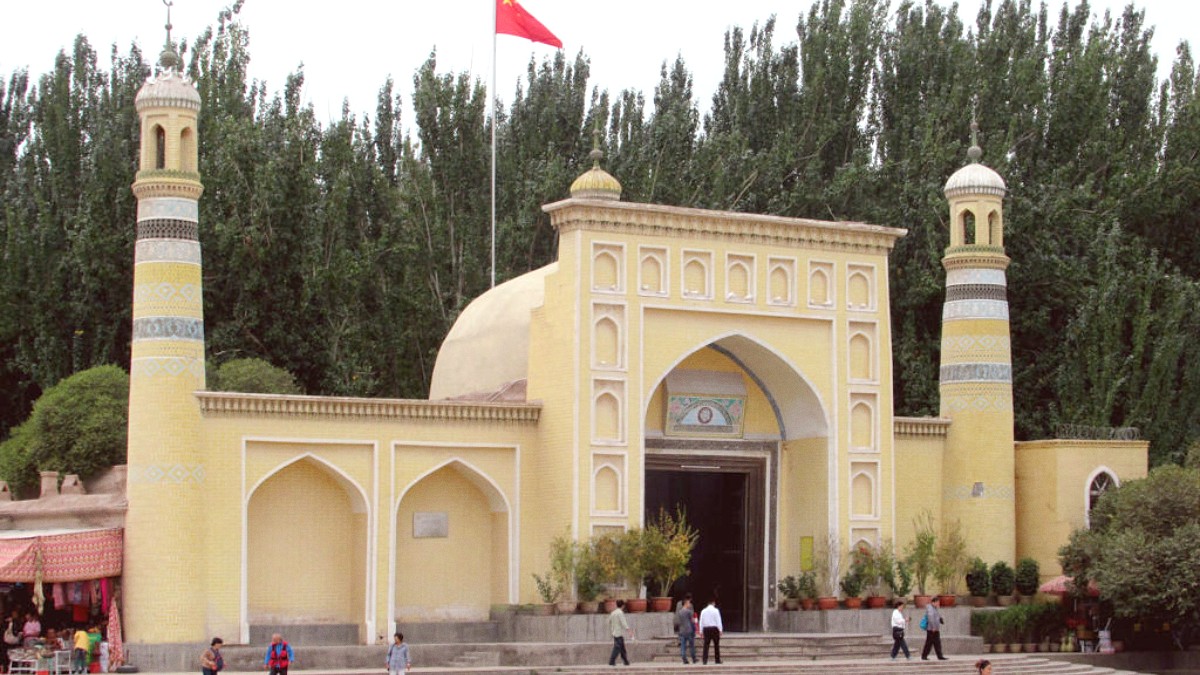
Xinjiang, China
Kashgar is a city of layers, where ancient traditions meet modern life. Its strategic location along the Silk Road has shaped its unique character, evident in its architecture, markets, and diverse population.
A visit to Kashgar signifies stepping into a living history book, with each corner recounting a story of trade, culture, and endurance.
Many buildings have undergone reinforcement or rebuilding to modern standards for safety, so while they appear traditional, they are not always centuries-old structures.
A and ancient trading hub along the Silk Road, drawing merchants and goods from across Central Asia. A sensory overload of sights, sounds, and smells, offering everything from textiles and spices to livestock.
The market operates daily, but Sunday marks the main and most bustling market day, when the animal market also gathers. Entry is free; payment applies only to purchased goods.
Go early on Sunday morning to avoid the largest crowds. Be ready to bargain for goods (start at 50% of asking price). Watch your belongings in crowded areas for pickpocketing, though overall crime is low due to high security.
Overall crime in Kashgar is low due to high security. The animal market operates separately from the main bazaar and is a short drive away.
Kashgar’s museums and cultural centers offer insights into its rich history, unique ethnography, and artistic traditions. They provide context that deepens your understanding of the city.
These institutions showcase the region's past and cultural diversity.
Kashgar and its surroundings feature historical sites reflecting its ancient past as a Silk Road metropolis.
These areas capture the essence of Kashgar's past urban fabric.
Beyond the grand Id Kah Mosque, Kashgar has numerous smaller, local mosques and shrines.
Kashgar's natural attractions provide a stunning contrast to its urban centers, moving from arid desert landscapes to majestic mountain vistas.
People's Park: A central city park offering green spaces, recreational areas, and sometimes small amusement rides. A popular spot for locals to relax, stroll, and engage in activities like dancing or tai chi in the mornings. Kashgar Martyrs' Cemetery: Features well-maintained gardens and serves as a quiet green space.
The vast Pamir mountain range surrounds Kashgar to the west and south, part of the "Roof of the World," offering dramatic landscapes of rugged peaks, deep valleys, and remote high-altitude plateaus. The Karakoram Highway offers a scenic drive through these mountains.
The most stunning natural attraction near Kashgar, located about 200 km southwest of the city in the Pamir Mountains. A high-altitude lake (over 3,600 meters or 11,800 feet above sea level) featuring breathtaking, mirror-like views of Muztagh Ata, Kongur Tagh, and Kongur Tiube. The lake is in a nomadic Kyrgyz and Tajik area, known for its pristine natural beauty.
A day trip from Kashgar is typical. It includes a special permit, almost always arranged by a tour operator or private guide. Be aware of the high altitude and the risk of altitude sickness.
Find Karakul Lake ToursThe lake is best visited on a clear day for spectacular mountain reflections on its calm waters. Consider an overnight stay in a traditional yurt by the lake (arranged through your tour) for incredible sunrise and sunset views over the peaks. Bring warm layers, even in summer, as temperatures are much cooler at this elevation.
Book Yurt StaysSpecific wildlife viewing opportunities for tourists are limited and not easily accessible from Kashgar city. The Pamir Mountains region does host some wildlife (e.g., Marco Polo sheep, ibex), but spotting them requires dedicated expeditions and additional permits. Organized wildlife tours are not a common offering.
Red Mountain (Kezil Qi): A small, prominent red sandstone hill near Kashgar. It offers some panoramic views of the city and the surrounding plain, especially during sunset. It is a noticeable landmark on the city's skyline.
Independent camping is generally not permitted or recommended for foreign tourists in Xinjiang due to security regulations and the need for permits for remote areas.
Discover spots that reveal the true essence of Kashgar away from the main tourist routes.
Capturing the unique spirit of Kashgar through your lens.
These lesser-known spots offer a , more intimate glimpse into local life and unique traditions, enhancing your travel experience beyond the main tourist paths.
While the entire Xinjiang region faces travel restrictions for foreigners, areas immediately surrounding Kashgar (like Artux) offer more rural Uyghur and Kyrgyz villages.
Exploring outside Kashgar often needs special permits and organized tours. Independent travel to remote villages remains highly restricted for foreign visitors.
The regional travel situation can change. Always check the latest foreign travel advisories before planning visits to remote areas outside Kashgar city limits.
Venturing into the surrounding landscapes and villages offers distinct experiences.
These experiences often feel more authentic and less tourist-oriented.
They can also provide valuable cultural context and insights.
Travel to certain areas outside Kashgar, especially the Pamir Mountains, typically includes a special permit.
Confirm all permit details well in advance of your trip.
Kashgar and its surrounding areas feature a visible security presence and surveillance systems. This is a common aspect of travel in Xinjiang and travelers should be aware of it.
Exercising cultural sensitivity and respect for local customs will make for a more positive travel experience. This includes dress codes at religious sites and interaction with locals.
Frequent passport checks at hotels, checkpoints, and attractions are common. Always carry your passport and other relevant travel documents.